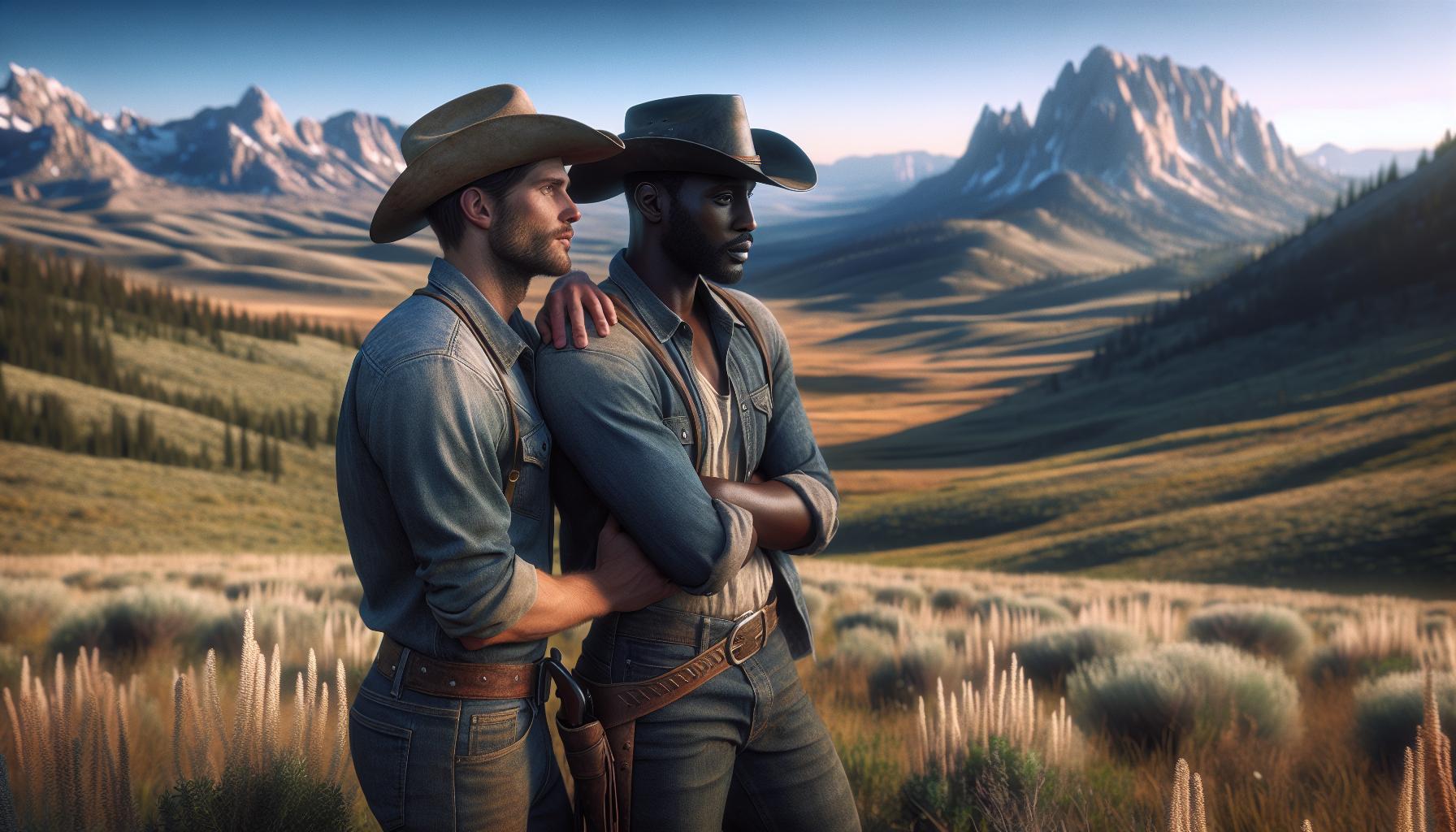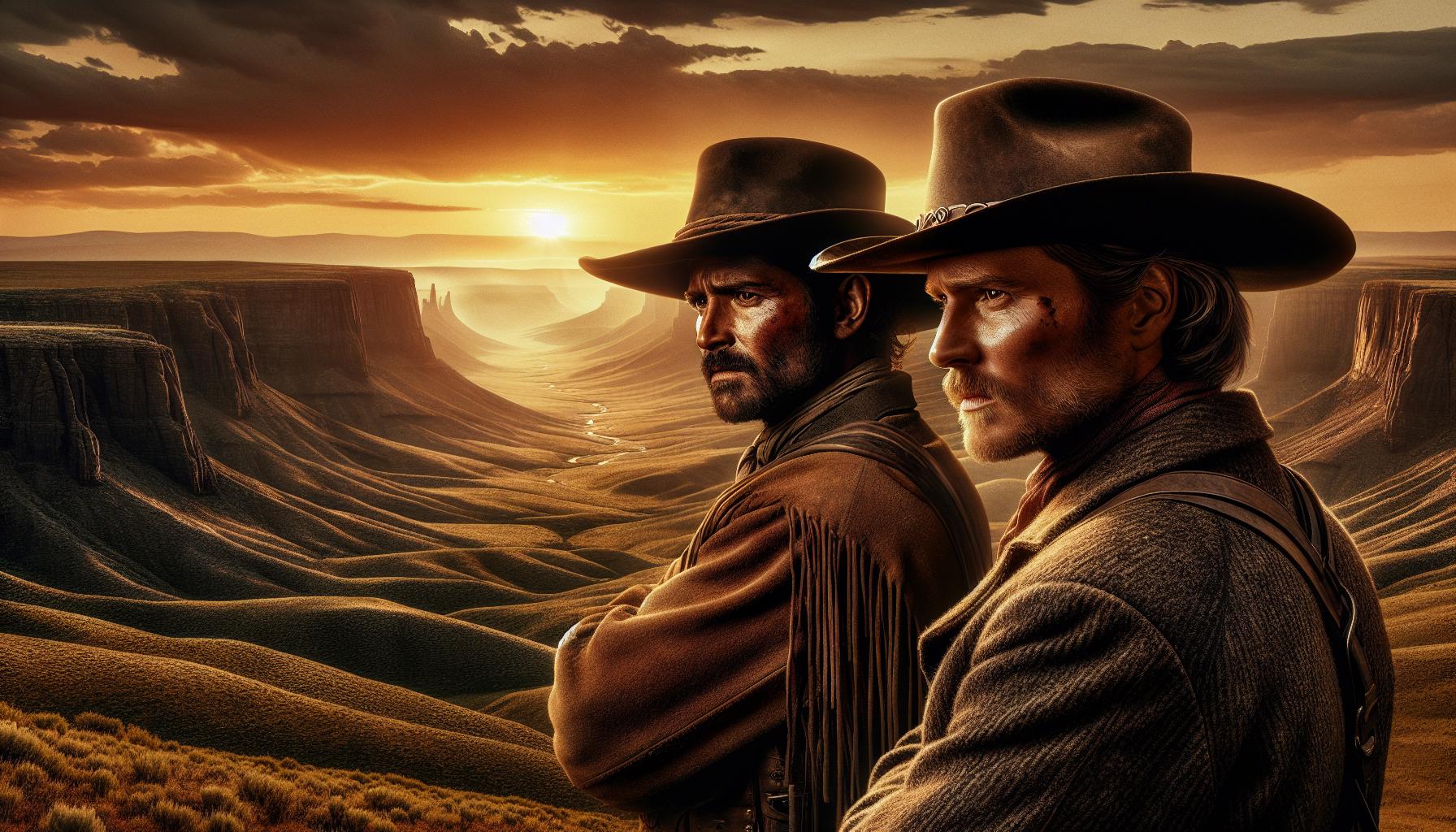Brokeback Mountain captured hearts and sparked conversations, but how much of it is rooted in reality? This iconic film, with its breathtaking landscapes and poignant love story, leaves many wondering if Jack and Ennis were based on real-life cowboys or if they’re purely a product of cinematic imagination. As viewers rode along on this emotional rollercoaster, they couldn’t help but ask: Are these star-crossed lovers just figments of a writer’s vivid imagination? With a mix of humor and heartbreak, the film invites audiences to explore the complexities of love, identity, and societal norms. So saddle up as we dive into the truth behind Brokeback Mountain and uncover whether this tale of forbidden romance is more than just a Hollywood fairy tale.
Is Brokeback Mountain a True Story
“Brokeback Mountain,” directed by Ang Lee, debuted in 2005 and quickly became a cultural touchstone. The film centers on the complex relationship between two cowboys, Ennis Del Mar and Jack Twist. Their story unfolds against the backdrop of the American West, highlighting the struggles they face in a society marked by rigid norms.
The narrative is adapted from a short story by Annie Proulx, published in 1997. While Proulx’s characters draw from her observations, the film’s emotional resonance goes beyond mere fiction. The struggles of the protagonists mirror real-life experiences of many individuals coping with love in a prejudiced environment.
Ennis and Jack’s bond intensifies over the years, presenting an exploration of emotional and sexual identity. This profound connection faces societal challenges and personal fears. Many viewers relate to their journey, drawing parallels with broader themes of love that transcend gender.
Critical acclaim followed the film, with multiple Oscar nominations, including Best Picture. It won three Academy Awards, notably for Ang Lee’s direction. Influenced by the film’s reception, conversations surrounding LGBTQ+ rights gained momentum.
Questions about the film’s authenticity linger. While the specific characters are fictional, they reflect the realities of countless individuals throughout history, illustrating the universal struggle for acceptance. Real-life stories of love and loss exist alongside fictional narratives, enriching the dialogue about identity and belonging.
“Brokeback Mountain” serves as both a compelling love story and a significant cultural artifact. Its impact resonates far beyond the screen, inviting ongoing reflection on the complexities of human relationships.
The Origins of Brokeback Mountain

“Brokeback Mountain” stems from real emotions and experiences, rooted in Annie Proulx’s narrative. The essence of the story connects deeply to the struggles faced by many in society.
Annie Proulx’s Short Story
Annie Proulx penned the original short story in 1997, published in The New Yorker. The narrative focuses on the tumultuous relationship between two cowboys, Jack and Ennis. Themes of isolation and societal expectation resonate throughout the work. Proulx’s writing captures the harsh realities of love in a prejudiced world, providing an authentic lens on LGBTQ+ relationships.
Adaptation into Film
The film adaptation, released in 2005, was directed by Ang Lee. Screenwriters Larry McMurtry and Diana Ossana adapted Proulx’s short story into a screenplay. They emphasized emotional depth, while maintaining the core themes introduced in the original text. Critically acclaimed, the film brought widespread attention to LGBTQ+ narratives, sparking societal discussions. Its portrayal of love, identity, and struggle transcended the screen, reinforcing important messages about acceptance.
Real-Life Inspirations

“Brokeback Mountain” draws from real-life experiences that resonate within cowboy culture and illustrate deep emotional truths. The film’s characters reflect struggles similar to those faced by many individuals navigating love and acceptance.
The Lives of Cowboy Culture
Cowboy culture has historically emphasized rugged masculinity and emotional restraint. Individuals in this culture often grapple with societal expectations, leading to internal conflict when expressing love. Stories of real cowboys reveal moments of vulnerability and connection, showcasing relationships that remain hidden due to fear of judgment. Ennis and Jack’s experiences parallel those of many men navigating these restrictive environments.
Interviews and Accounts
Numerous interviews and accounts from individuals in the LGBTQ+ community highlight similar journeys. These narratives recount the challenges faced by men who loved in secrecy within traditional settings. Voices from the past offer perspectives on love and loss, emphasizing the societal pressures that forced many into solitude. Real stories affirm the emotional core of “Brokeback Mountain,” reinforcing the film’s themes of unfulfilled love and longing for acceptance.
Cultural Impact of Brokeback Mountain

“Brokeback Mountain” significantly influenced public perception of LGBTQ+ relationships. The film sparked vital discussions about love, identity, and societal norms. Characters Ennis Del Mar and Jack Twist represent the struggle for acceptance that many face, prompting empathy from audiences. Changing perspectives emerged as the film highlighted the emotional complexities surrounding same-sex love.
Changing Perspectives on LGBTQ+ Themes
Changing perspectives within society reflect the impact of “Brokeback Mountain.” Audiences began to recognize LGBTQ+ narratives as critical components of the storytelling landscape. Traditional views on masculinity and relationships faced challenges from the film’s portrayal of vulnerability. Portraying real emotions resonated with viewers, helping reduce stigma attached to same-sex relationships. The narrative encouraged dialogue about LGBTQ+ issues, marking a shift in cultural attitudes.
Reception and Awards
The reception of “Brokeback Mountain” demonstrated its significance in cinema. Nominated for eight Academy Awards, it won three, including Best Director for Ang Lee. Critics praised the film for its storytelling and emotional depth. Both audiences and industry experts acknowledged its cultural relevance, which paved the way for greater representation of LGBTQ+ themes in film. Recognition from prestigious awards affirmed its status as a definitive work in American cinema.
Misconceptions About the Story
Many misconceptions surround the narrative of “Brokeback Mountain.” Understanding the distinction between fiction and reality clarifies these misunderstandings.
Clarifying Fiction vs. Reality
Jack Twist and Ennis Del Mar originate from a fictional narrative rather than real individuals. Annie Proulx crafted their characters in her 1997 short story. Harmful assumptions often arise, leading viewers to believe these cowboys represent actual people. The emotional experiences depicted in the film, however, relate closely to real-life struggles faced by members of the LGBTQ+ community. Stories of individuals navigating love in oppressive environments serve as a backdrop, enriching the film while maintaining the integrity of its fictional characters.
Author’s Intent
Annie Proulx’s intent shapes the essence of “Brokeback Mountain.” Her exploration of love and isolation reveals the emotional core of the story. Through Jack and Ennis, Proulx illustrates the conflicts borne from societal norms. The author’s message emphasizes the universal nature of love, regardless of gender. Readers and viewers can reflect on the deeper implications of human connection, even in a climate of prejudice. By focusing on these themes, Proulx invites audiences to confront the truths regarding societal expectations and the longing for acceptance.
“Brokeback Mountain” resonates deeply with audiences due to its exploration of love and identity against societal pressures. While the characters Jack and Ennis are not based on real individuals, their experiences reflect the genuine struggles faced by many in the LGBTQ+ community. The film’s impact extends beyond its narrative, challenging traditional notions of masculinity and fostering important conversations about acceptance. As a cultural milestone, it continues to inspire reflection on the complexities of human relationships and the universal quest for love in a world often marked by prejudice.



